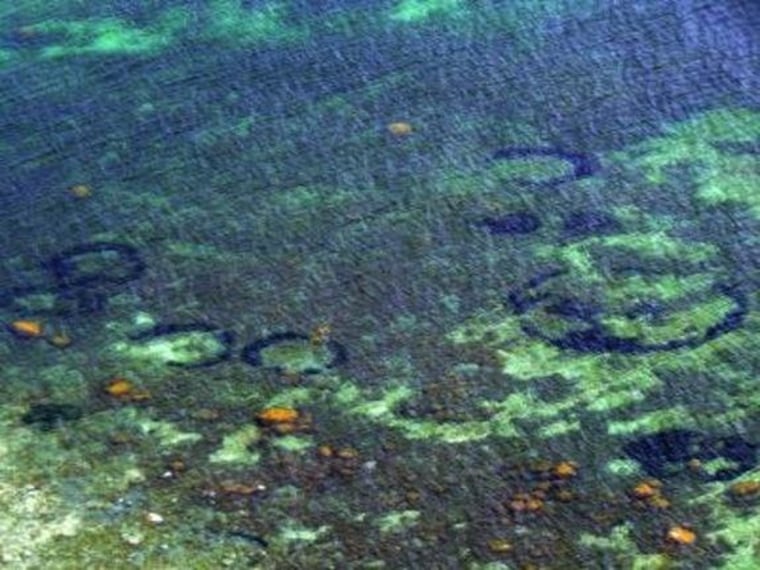They're not the work of World War II bombs or aliens or fairies. Instead, mysterious underwater rings spotted off the coast of Denmark are the result of poison, biologists say.
Striking rings of green eelgrass — some of them up to 49 feet (15 meters) wide — can occasionally be spotted in the clear Baltic water off the coast of Denmark's island of Møn. The formations were captured in tourist photos in 2008 and again in 2011, sparking the type of speculation that's usually reserved for crop circles.
But biologists Marianne Holmer from University of Southern Denmark and Jens Borum from University of Copenhagen assure that the circles have "nothing to do with either bomb craters or landing marks for aliens." [In Photos: Mysterious Crop Circles]
"Nor with fairies, who in the old days got the blame for similar phenomena on land, the fairy rings in lawns being a well known example," Holmer and Borum said in a statement today (Jan. 30).
The biologists concluded that the rings formed because of the radiating pattern in which the eelgrass grows — and dies when exposed to toxins. In the mud around the eelgrass, the scientists detected high levels of sulfide, a substance that's poisonous to eelgrass and can build up naturally in a chalky seabed like the one off Møn (or unnaturally when agricultural pollutants enter an ecosystem).
"Most mud gets washed away from the barren, chalky seabed, but like trees trap soil on an exposed hillside, eelgrass plants trap the mud," Holmer and Borum explained. "And therefore there will be a high concentration of sulfide-rich mud among the eelgrass plants."
Though it might resemble a type of seaweed, eelgrass is actually a flowering plant. And when it grows, it expands outward in all directions, creating circle-shaped colonies. While healthy adult eelgrass plants seem to be able to withstand the sulfide in their environment, the old plants at the heart of the colonies drop dead, the researchers said.
"The result is an exceptional circular shape, where only the rim of the circle survives — like fairy rings in a lawn," Holmer and Borum added.
Fairy rings in a lawn are typically blamed on the outward growth of fungi, but other fairy circles on land have long puzzled scientists. A famous example can be found in the desert grasslands of Namibia in southern Africa, where researchers have offered up a wide range of explanations for the vast field of circular patches, from ants and termites to gas seeps and resource competition.
The explanation for the eelgrass fair rings is detailed in this month's edition of the journal Marine Biology.
- Megan Gannon
Follow Megan Gannon on Twitter and Google+. Follow us @livescience, Facebook & Google+. Original article on Live Science.
- Photos: Pufferfish Make Seafloor Circles to Mate
- Image Gallery: Amazing 'Fairy Circles' of the Namib Desert
- Dark Waters: The Most Mysterious Places on the Seas
Copyright 2014 LiveScience, a TechMediaNetwork company. All rights reserved. This material may not be published, broadcast, rewritten or redistributed.
